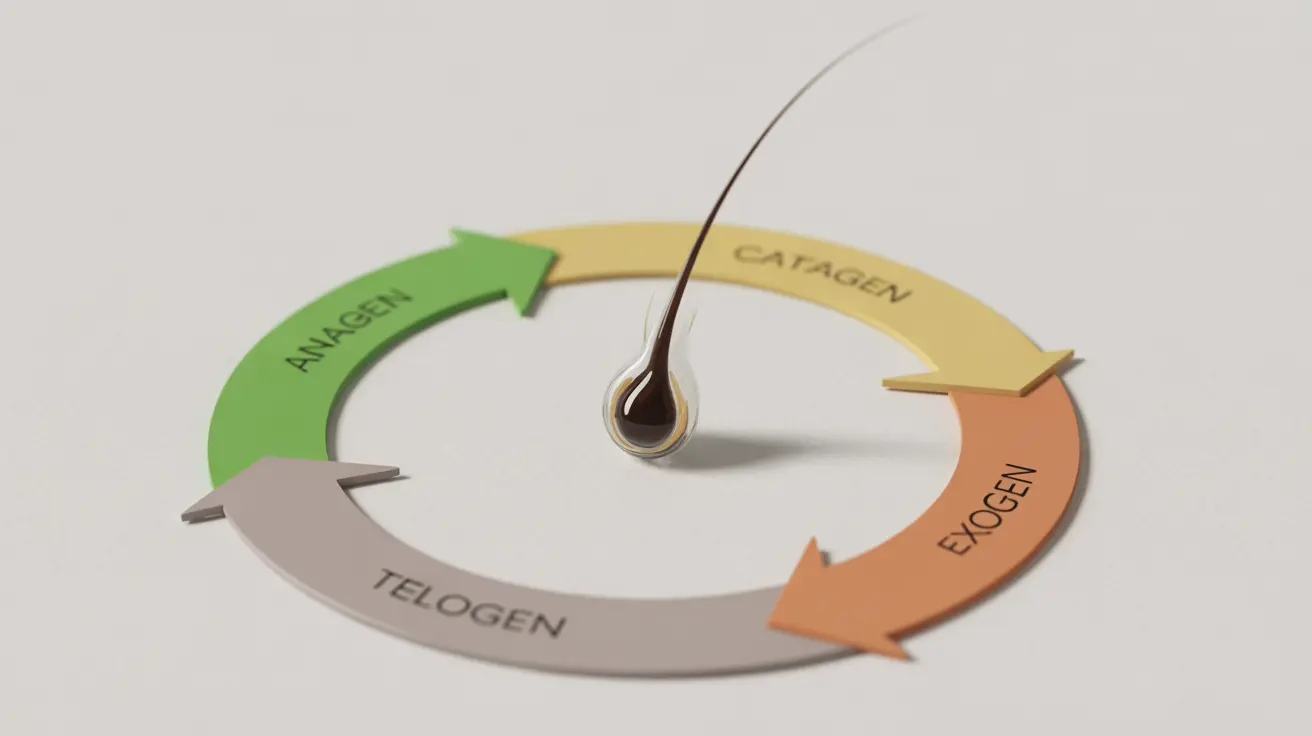The hair growth cycle is a fascinating biological process that determines how our hair grows, rests, and sheds throughout our lives. This complex cycle consists of distinct phases that work together to maintain healthy hair growth and natural hair renewal. Understanding these phases can help you better care for your hair and identify potential issues affecting its health.
Whether you're concerned about hair loss, interested in promoting healthier hair growth, or simply curious about how your hair naturally cycles, learning about this process is key to maintaining optimal hair health. Let's explore each phase of the hair growth cycle and discover how they impact your hair's appearance and health.
The Four Main Phases of Hair Growth
The hair growth cycle consists of four distinct phases, each playing a crucial role in hair development and maintenance:
Anagen (Growth) Phase
The anagen phase is the active growth period of your hair, typically lasting 2-7 years. During this time, hair follicles produce new cells that form the hair shaft, determining your hair's maximum length and thickness. This phase affects about 85-90% of the hair on your scalp at any given time.
Catagen (Transition) Phase
This brief transitional phase lasts approximately 2-3 weeks. During catagen, the hair follicle shrinks and detaches from the dermal papilla, stopping active growth. This phase affects about 1% of scalp hairs and marks the end of the growth period.
Telogen (Resting) Phase
The telogen phase is a resting period lasting about 3 months. During this time, old hair remains in the follicle while new hair begins to form beneath it. Approximately 10-15% of scalp hairs are in this phase at any given time.
Exogen (Shedding) Phase
The final phase involves the natural shedding of hair, with most people losing 50-100 hairs daily during this process. This natural hair loss makes way for new growth and is essential for maintaining healthy hair renewal.
Factors Affecting the Hair Growth Cycle
Internal Factors
Several internal factors can influence your hair growth cycle:
- Hormonal changes
- Genetics
- Age
- Medical conditions
- Nutritional status
External Factors
External influences that may impact the cycle include:
- Stress
- Medications
- Environmental conditions
- Hair care practices
- Seasonal changes
Supporting Healthy Hair Growth
To maintain a healthy hair growth cycle, consider these essential practices:
- Maintain a balanced diet rich in proteins, vitamins, and minerals
- Protect hair from excessive heat and chemical treatments
- Manage stress levels through regular exercise and relaxation techniques
- Use gentle hair care products suitable for your hair type
- Stay hydrated and maintain good overall health
Frequently Asked Questions
What are the different phases of the hair growth cycle and how long does each phase last?
The hair growth cycle consists of four phases: anagen (2-7 years), catagen (2-3 weeks), telogen (3 months), and exogen (shedding phase). Each phase has specific durations and functions in the overall cycle.
How does the anagen phase affect the length and thickness of hair?
The anagen phase directly determines your hair's maximum length and thickness as it's the active growth period. Longer anagen phases result in longer, thicker hair, while shorter phases lead to shorter, finer hair growth.
Why does hair shedding occur during the exogen phase, and is losing 50-100 hairs per day normal?
Hair shedding during the exogen phase is a natural part of the hair renewal process. Losing 50-100 hairs per day is completely normal and necessary to make way for new hair growth. This process ensures continuous hair renewal and maintenance.
What factors can disrupt the normal hair growth cycle and cause hair loss?
Various factors can disrupt the hair growth cycle, including hormonal imbalances, stress, poor nutrition, medical conditions, certain medications, and genetic predisposition. These disruptions can lead to increased hair loss or changes in hair growth patterns.
How can understanding the hair growth cycle help in treating or preventing hair thinning and baldness?
Understanding the hair growth cycle helps identify the best timing for treatments, recognize early signs of problems, and implement appropriate interventions. This knowledge enables better prevention strategies and more effective treatment approaches for hair thinning and baldness.
Remember, while the hair growth cycle is a natural process, maintaining overall health and addressing any underlying issues are key to supporting optimal hair growth and preventing excessive hair loss.




